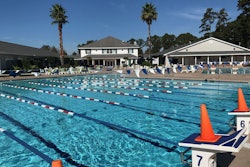SOURCE: National Federation of State High School Associations
INDIANAPOLIS, IN (May 22, 2019) — The nine rules changes approved for the 2019-20 high school ice hockey season focus on consistency and clarity.
The National Federation of State High School Associations (NFHS) Ice Hockey Rules Committee recommended the changes at its April 29-30 meeting in Indianapolis, and all changes were subsequently approved by the NFHS Board of Directors.
Three changes in Rule 3 related to equipment expand the maximum length of a player’s stick from 63 to 65 inches and the goalkeeper’s stick from 26 to 28 inches. Additionally, Rule 3-4-5 now emphasizes the requirement that all players, including goalkeepers, must wear helmets and facemasks that meet HECC/ASTM standards at the time of manufacture.
“From an awareness and educational standpoint, the committee continues to push the importance of wearing proper equipment for the health and safety of our participants,” said Dan Schuster, NFHS director of educational services and liaison to the Ice Hockey Rules Committee. “The committee has done a great job over the past several years and has put the rules in a good place.”
Rule 7-10-3 now clarifies that striking an opponent with the stick above the opponent’s shoulders is prohibited, regardless of whether the action was intentional or not. The change also eliminates repetitive language to allow the official to assess the appropriate penalty for an infraction.
“This creates consistency with other fouls of this nature,” Schuster said. “It gives officials flexibility to call what they see. Officials can call a minor penalty or if flagrant, a major penalty or game disqualification, depending on the severity of the infraction.”
Changes to Rules 4-7-5 and 9-2-1 make it clear that only goalkeepers can defend a penalty shot and establish that only players in goalkeeper equipment are given goalkeeper privileges, regardless of when they are substituted.
“The intent of the rules is to have goalkeepers defend the goal cage,” Schuster said. “Goalkeepers have specific equipment for a reason. This change cleans up language that other players should not be defending the goal cage.”
Two revisions to Rule 9 involve game flow. Prior to a faceoff, officials will now present the puck to the players before dropping the puck, allowing players to better see the puck before it is dropped and increasing the chance of a clean faceoff. The second change moves 9-1-11k to 9-1-9e since there is no offending team in 9-1-11, which covers when a puck deflects off an official and is illegally scored. The faceoff will now take place where the puck was last fairly played.
“It doesn’t happen often, but the committee did not like seeing the faceoff come outside of the zone in that situation,” Schuster said.
In Rule 5-3i, referees will now suspend the game – as opposed to terminating the game – if playing conditions become unsatisfactory. Suspending a contest allows it to be resumed, restarted or ended, with the decision resting with the schools, leagues and administration rather than solely with the referee.
A complete listing of all rules changes will be available on the NFHS website at www.nfhs.org.
Click on “Activities & Sports” at the top of the home page and select “Ice Hockey.”
More than 35,000 boys participate in ice hockey across the country in 1,610 high schools, and more than 9,500 girls participate in the sport in 622 schools, according to the 2017-18 NFHS Athletics Participation Survey.
About the National Federation of State High School Associations (NFHS)
The NFHS, based in Indianapolis, Indiana, is the national leadership organization for high school sports and performing arts activities. Since 1920, the NFHS has led the development of education-based interscholastic sports and performing arts activities that help students succeed in their lives. The NFHS sets direction for the future by building awareness and support, improving the participation experience, establishing consistent standards and rules for competition, and helping those who oversee high school sports and activities. The NFHS writes playing rules for 17 sports for boys and girls at the high school level. Through its 50 member state associations and the District of Columbia, the NFHS reaches more than 19,500 high schools and 12 million participants in high school activity programs, including more than 7.9 million in high school sports. As the recognized national authority on interscholastic activity programs, the NFHS conducts national meetings; sanctions interstate events; offers online publications and services for high school coaches and officials; sponsors professional organizations for high school coaches, officials, speech and debate coaches, and music adjudicators; serves as the national source for interscholastic coach training; and serves as a national information resource of interscholastic athletics and activities. For more information, visit the NFHS website at www.nfhs.org.


































